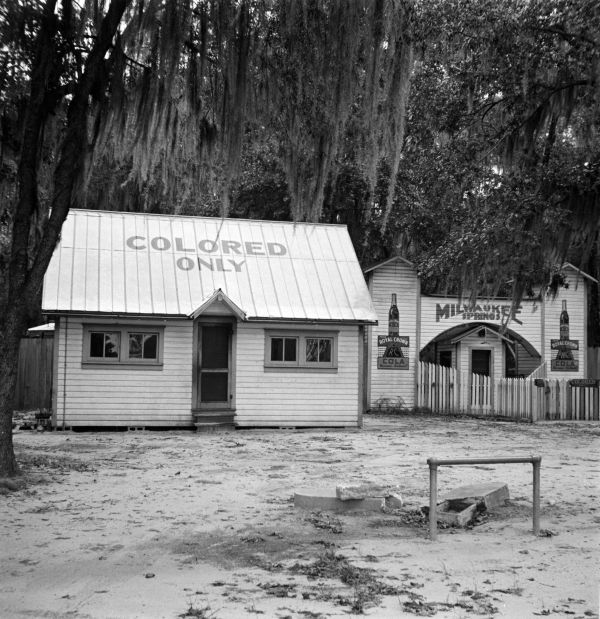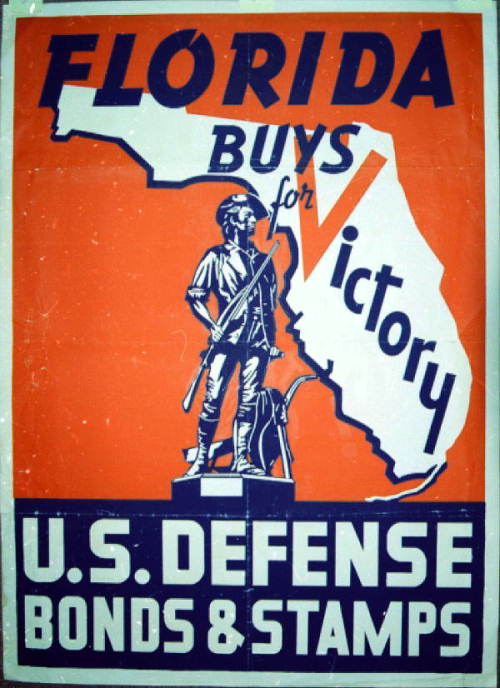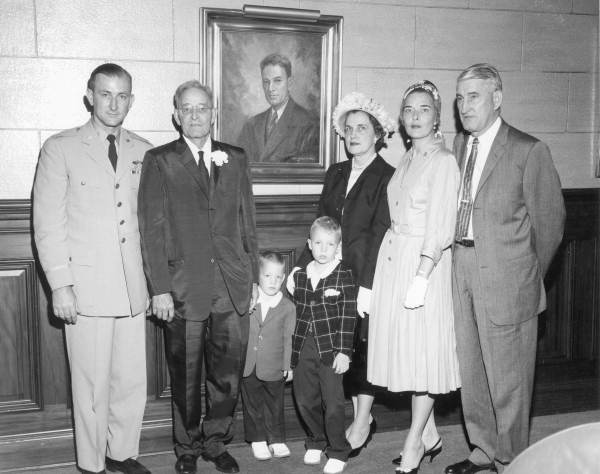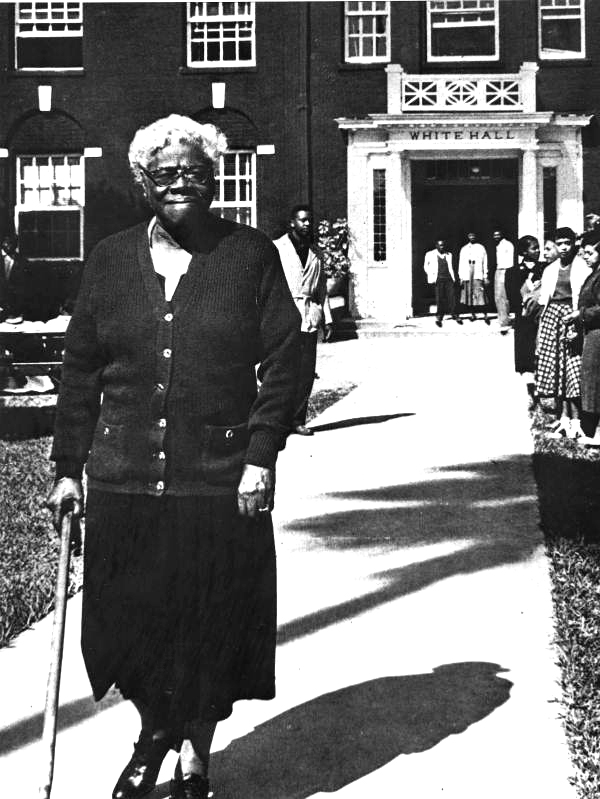Description of previous item
Description of next item
Have You Heard of Milwaukee Springs?
Published June 6, 2014 by Florida Memory
Milwaukee Springs was a segregated African-American recreational area operating northwest of Gainesville in Alachua County at least as early as 1940. During World War II, white and African-American leaders alike had high hopes it would be turned into a health and recreation facility for African-American soldiers stationed at Camp Blanding and elsewhere.

Taken by photographer Charles Foster, this is the only photograph Florida Memory has of Milwaukee Springs, a segregated recreational area for African-Americans in Alachua County. Documentary evidence suggests it was located northwest of Gainesville (circa 1940).
One of the earliest references to Milwaukee Springs comes from a biennial report of the Florida Fresh Water Fish and Game Commission published in 1940, which briefly notes that the commission’s game technician had participated in a wildlife camp for African-American boys held at this location.
The site surfaces again in the paper trail during World War II. As war clouds threatened during the months before Pearl Harbor, the state government and local communities organized defense councils to coordinate preparations for the U.S. to enter the conflict. With Jim Crow in full force throughout Florida at this time, communities frequently used separate organizations to coordinate the wartime efforts of African-American civilians, with their leaders keeping in close contact with their white counterparts for the sake of cooperation.

One of several posters contained in the papers of the State Defense Council of Florida, which helped organize communities across the state to meet the needs of the war effort during World War II (circa 1942).
Managing and rationing supplies and manpower were critical, of course, but these defense councils also planned for recreation, for civilians and soldiers alike. A number of African-American leaders were concerned that troops of their race had too few options for recreational activities, which was bad for morale. A group of local Alachua County citizens led by Charles Chestnut, president of the Colored Businessmen’s Association of Gainesville and chairman of a local African-American civil defense organization, proposed that Milwaukee Springs be converted into a facility to provide African-American soldiers with a place to relax during their time away from Camp Blanding or other nearby military posts.

Excerpt from the minutes of a meeting of the Negro Coordinating Committee on National Defense held in Tampa, December 17, 1941 (Series 419 – Papers of the State Defense Council, Box 33, State Archives of Florida)
Chestnut’s proposal won the endorsement of local Alachua County representative Samuel Wyche Getzen, and together these men called on Mary McLeod Bethune of the federal Office of Negro Affairs and Executive Secretary James White of the NAACP for help in getting the federal government involved.

Samuel W. Getzen (second from left) with his family upon the unveiling of his portrait in the chamber of the Florida House of Representatives. Getzen had been the Speaker of the Florida House in 1929. Photo dated 1959.

Photo of Mary McLeod Bethune in front of White Hall on the Bethune-Cookman College campus. The photo is believed to have been taken around the time Bethune was serving as the Director of the Office of Negro Affairs in President Franklin D. Roosevelt’s administration (circa 1940s).
Although the Federal Security Administration appears to have visited the site to consider the project’s worthiness, and a public hearing was held to discuss the matter in early 1942, it is unclear whether Milwaukee Springs ever became the center of African-American health and recreation its sponsors had hoped for. In fact, aside from a few references in the documents of Florida’s State Defense Council and the papers of the NAACP, very little else exists to document the site.
If you or someone you know has more information about Milwaukee Springs, we’d love to know about it. Contact us at florida.memory@dos.myflorida.com
Cite This Article
Chicago Manual of Style
(17th Edition)Florida Memory. "Have You Heard of Milwaukee Springs?." Floridiana, 2014. https://www.floridamemory.com/items/show/295181.
MLA
(9th Edition)Florida Memory. "Have You Heard of Milwaukee Springs?." Floridiana, 2014, https://www.floridamemory.com/items/show/295181. Accessed December 24, 2025.
APA
(7th Edition)Florida Memory. (2014, June 6). Have You Heard of Milwaukee Springs?. Floridiana. Retrieved from https://www.floridamemory.com/items/show/295181

 Listen: The World Program
Listen: The World Program